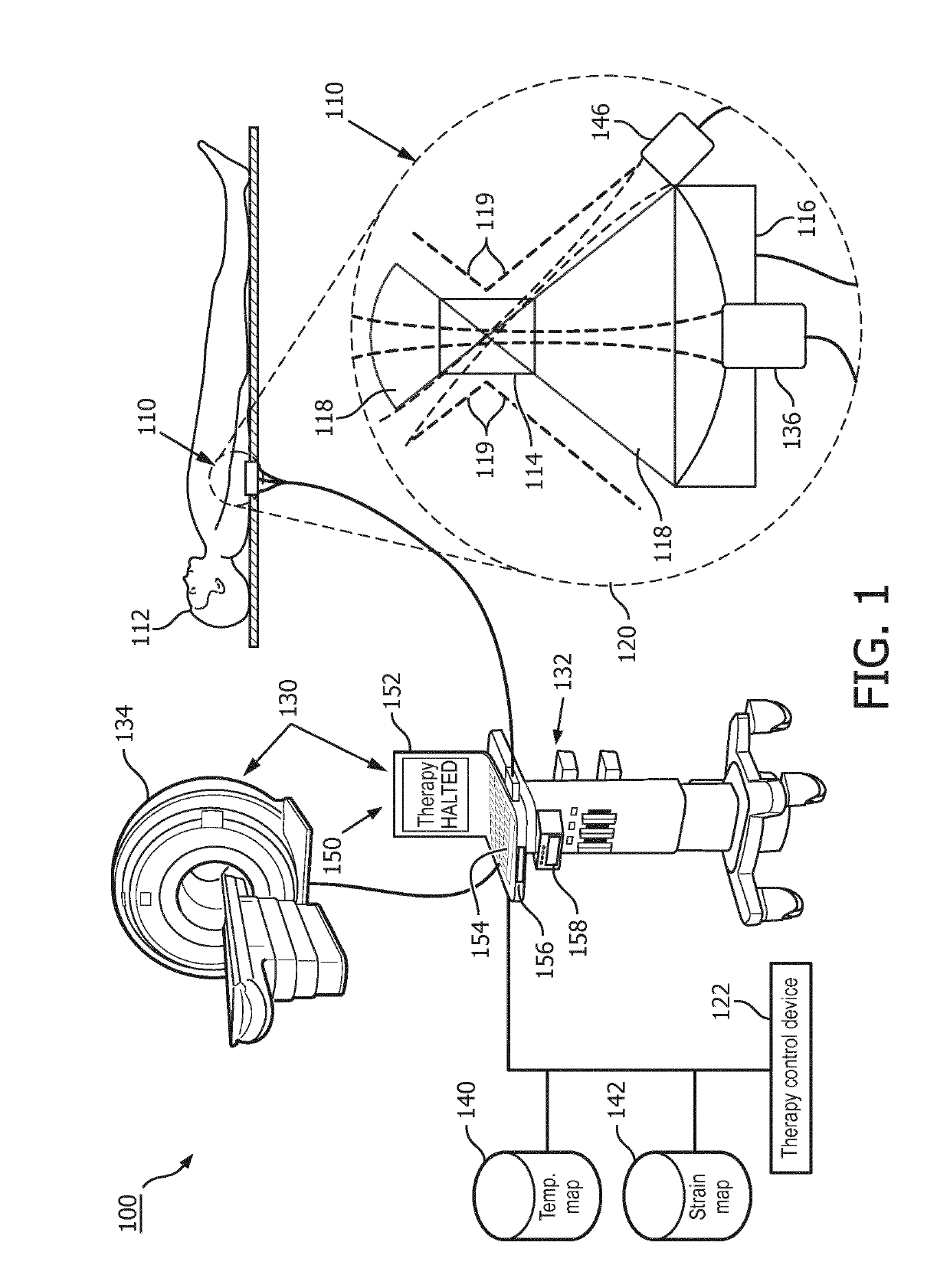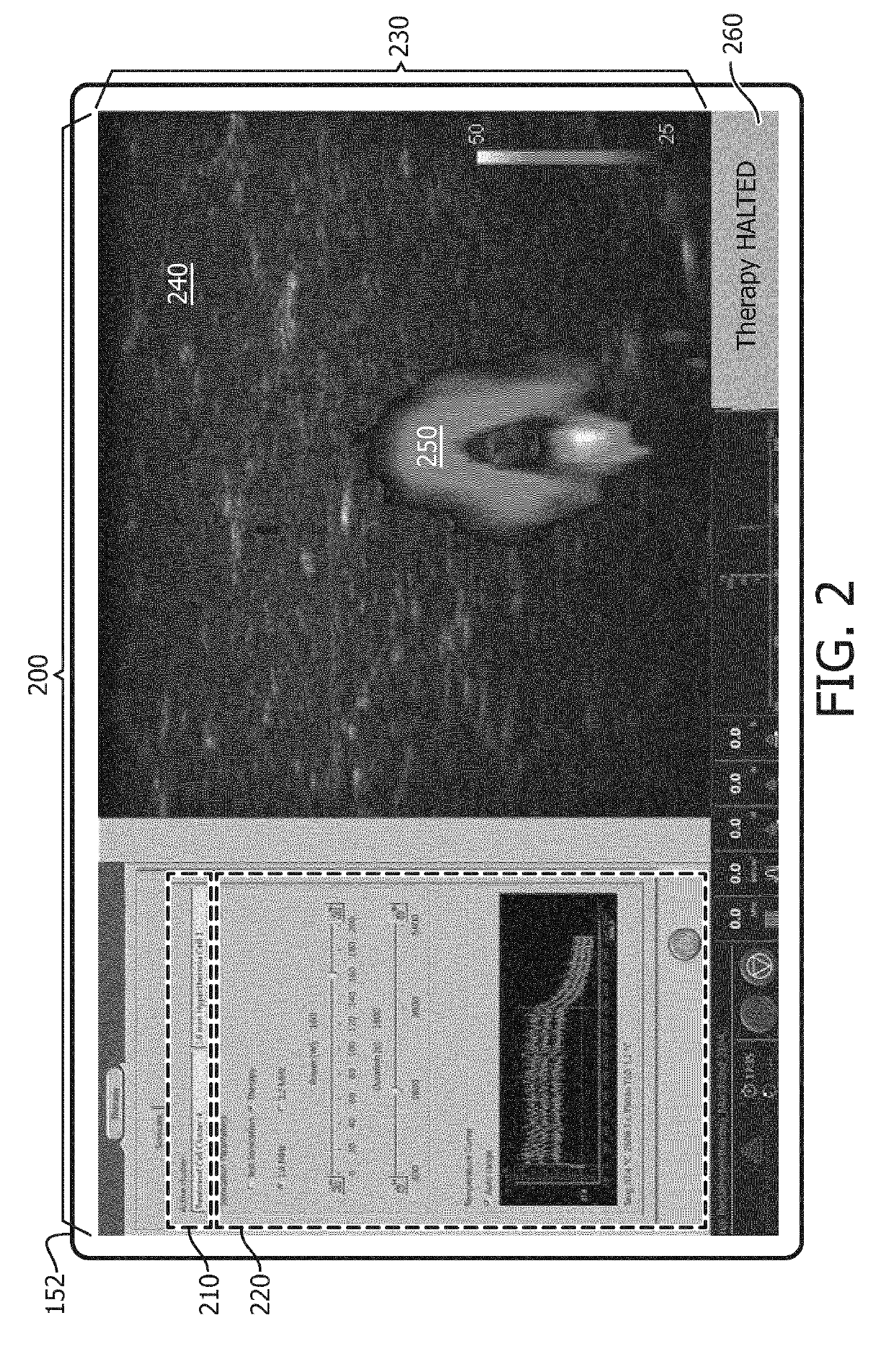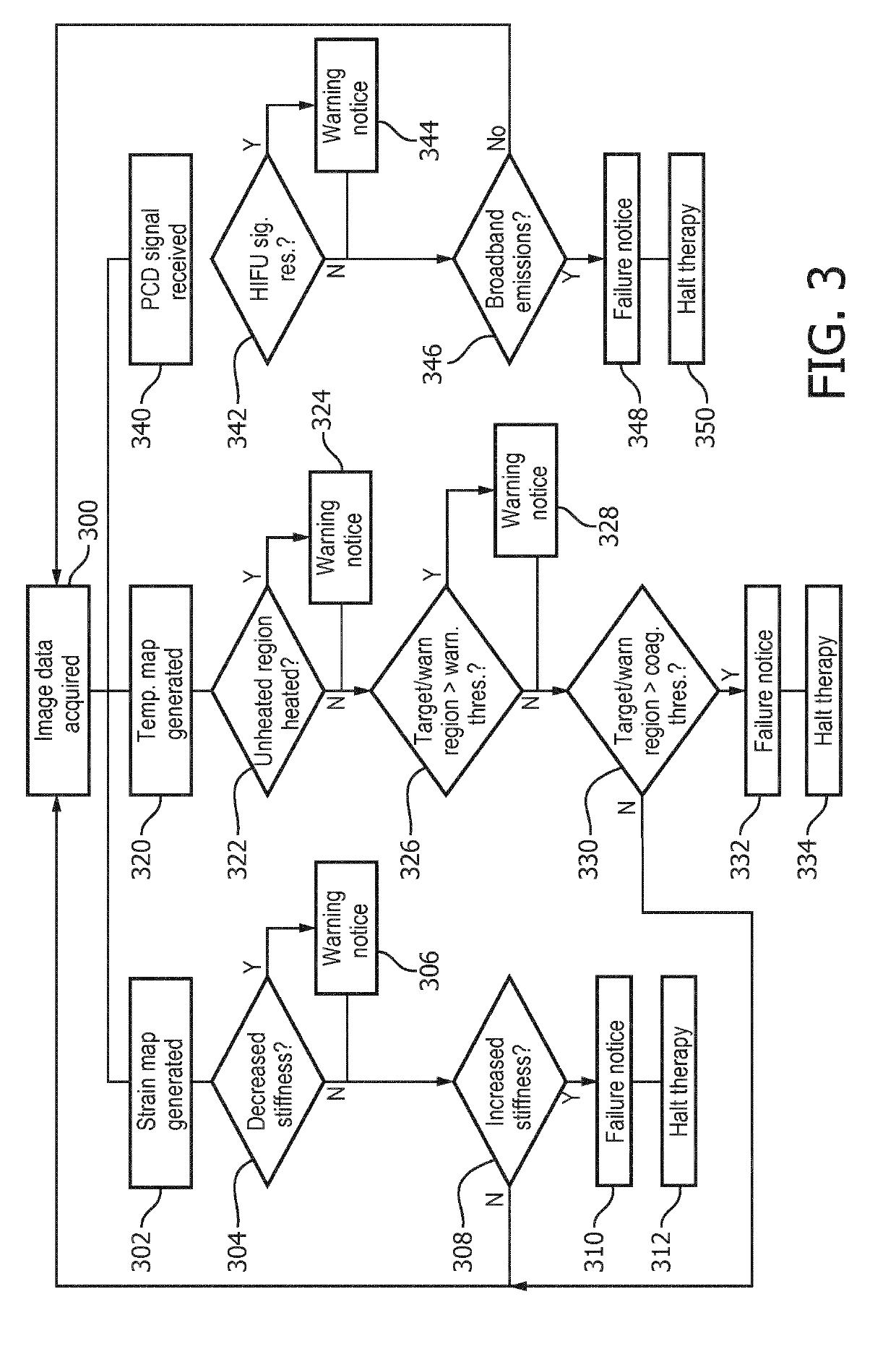Detection of treatment failure for mild hyperthermia
a mild hyperthermia and treatment failure technology, applied in the field of mild hyperthermia treatments, can solve the problems of difficult to maintain the temperature of all the tissues in the region in the range of 40-43° c, tissue may undergo irreversible thermal damage, and damage to the heat dissipation surface, etc., and achieve the effect of mild hyperthermia and high intensity focused ultrasound
- Summary
- Abstract
- Description
- Claims
- Application Information
AI Technical Summary
Benefits of technology
Problems solved by technology
Method used
Image
Examples
Embodiment Construction
[0017]Initially referring to FIG. 1, an embodiment of a system 100 that includes ultrasound hyperthermia treatment with detection of treatment failure modes is schematically illustrated with an exploded view of a localized treatment region 110 of a patient 112. A HIFU transducer 116 is configured to focus ultrasound energy into a target region 114 and by proximity into warning regions 118, which are adjacent regions or regions between the target region 114 and the HIFU transducer 116 in a path of the focused ultrasound energy. In one embodiment the warning regions 118 are defined by the path of the focused ultrasound energy. In another embodiment, the warning regions 118 include a margin 119, such as an adjacent region to the region of the path of the focused ultrasound energy and the target region 114. In some embodiments, the warning regions 118 are shaped in an hour glass shape of an expected acoustic field that includes the target region 114, the regions defined by the path of t...
PUM
 Login to View More
Login to View More Abstract
Description
Claims
Application Information
 Login to View More
Login to View More - R&D
- Intellectual Property
- Life Sciences
- Materials
- Tech Scout
- Unparalleled Data Quality
- Higher Quality Content
- 60% Fewer Hallucinations
Browse by: Latest US Patents, China's latest patents, Technical Efficacy Thesaurus, Application Domain, Technology Topic, Popular Technical Reports.
© 2025 PatSnap. All rights reserved.Legal|Privacy policy|Modern Slavery Act Transparency Statement|Sitemap|About US| Contact US: help@patsnap.com



